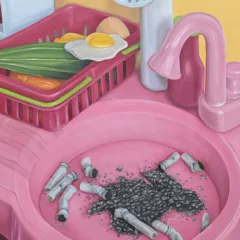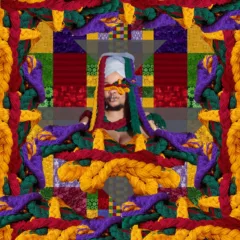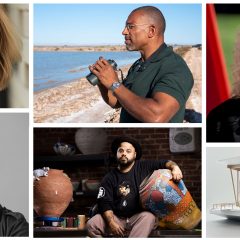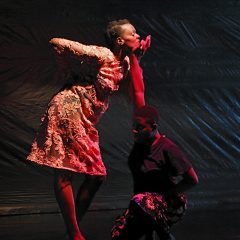Born in 1936, Ree Morton did not become serious about having a career in art until her early 30s, when she was already married with three children. This did not stop her from earning a BFA from the University of Rhode Island, followed by an MFA from Philly’s very own Tyler School of Art in 1970. Morton spent the next seven years creating until she was killed in a car accident in 1977. Since her untimely death, her legacy as a pioneer for feminist art and installation, whose work evocatively combines elements of sculpture, illumination, and poetry, has endured.
I visited Morton’s current retrospective at the ICA,The Plant That Heals May Also Poison, on a Saturday afternoon. Following the title piece, which appears first in the exhibition, are Morton’s earlier works and drawings. These consist mostly of simple shapes in earth-tones. The white room is adorned with off-white pages, shades of wood, and the muted colors of leaves and clay. Both Morton’s sculptures and her drawings in this section utilize a lot of open space. For example, the Newfoundland Drawings are a series of spare, pencil line drawings on large white paper, while Souvenir Piece includes six simple paintings installed several feet behind a sculpture of mostly wood.
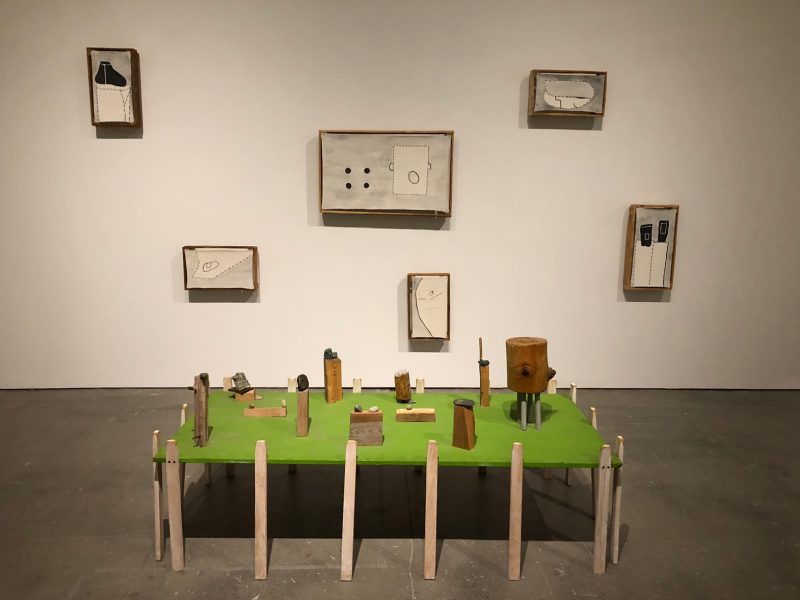
Preliminary sketches for Manipulations of the Organic, Morton’s final installation, line one wall of a small alcove — their vibrant pinks and blues offering a stark contrast to the muted, earthy hues of her earlier work. A nearby display case holds dozens of photos of the artist and of her work, as well as mementos from installations and a letter written by Morton herself.
Medium Play
A large room towards the back of the museum a holds a great number of 2- and 3-dimensional pieces, each of them bright and vivid in color. Here we see Morton begin to experiment with incorporating light bulbs into her work. One piece in particular, entitled Maternal Instincts, uses backlighting to frame the initials of her three children. Morton’s responsibility as a mother certainly delayed her art career; likewise, her focus on her art likely divided her attention away from her children. Maternal Instincts reminds the audience of these intersecting, sometimes conflicting, aspects of Morton’s life.
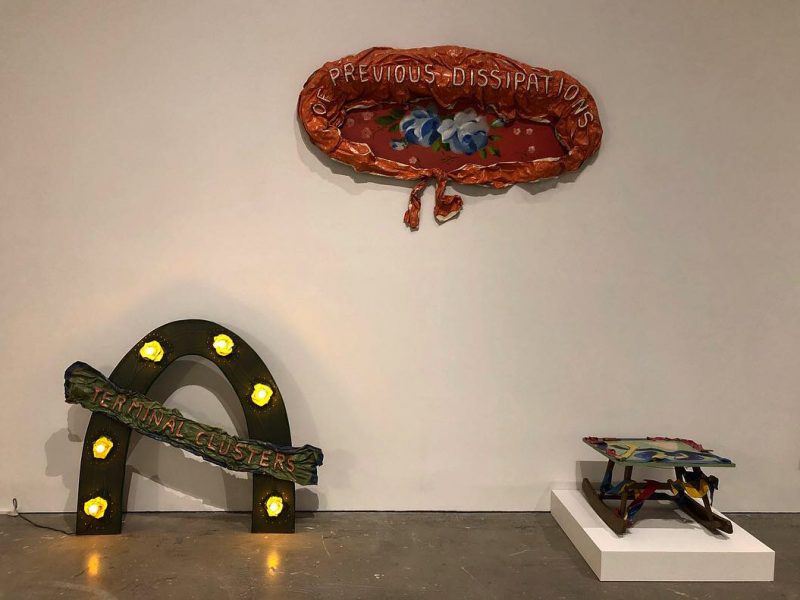
In addition to their expanded color palette, works from this period also exhibit a growing variety of materials — most prominently elastic, enamel, oil paint and glitter. A notable motif emerges, in which the works either contain or mimick the draping of fabric. Similarly, Morton continues her exploration of script, with many of the pieces containing words or entire phrases. Her use of text adds another, more intimate dimension to the work — granting viewers multiple ways into each piece.
The installation, Signs of Love (‘76), spans two large walls and contains a range of materials including acrylic, oil, watercolor, pastel, colored pencil, and a significant amount of felt. This is both the largest and arguably most complex piece in the exhibition. It includes various objects, from small paintings and sculptures to large yellow ladders and dark, dangling drapes. Amidst these objects, black felt letters spell words like “pleasures,” “gestures,” “moments,” and “settings.” Ironically, these words represent a variety of ways in which love can be expressed nonverbally, prompting viewers to consider how they demonstrate love in their own lives.
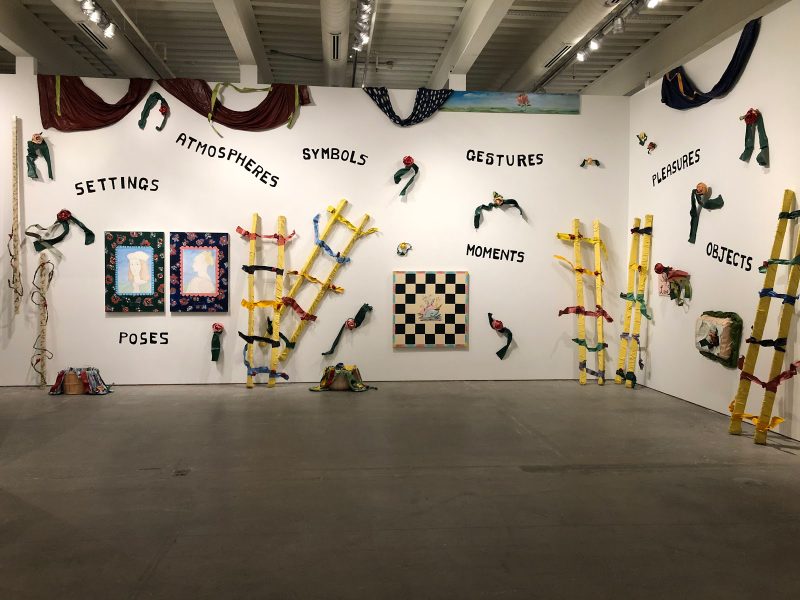
Mother Nature
A nearby pair of small oil paintings, each framed by a blue curtain features a portrait of a fish below a seascape horizon. This work, entitled Regional Piece calls to mind Morton’s other nature-based drawings in the show, including Weeds of the Northeast, Yellow Clintonia, and the Newfoundland Drawings. Each emphasizes the relationship between earthly ecosystems and Morton’s creative process.
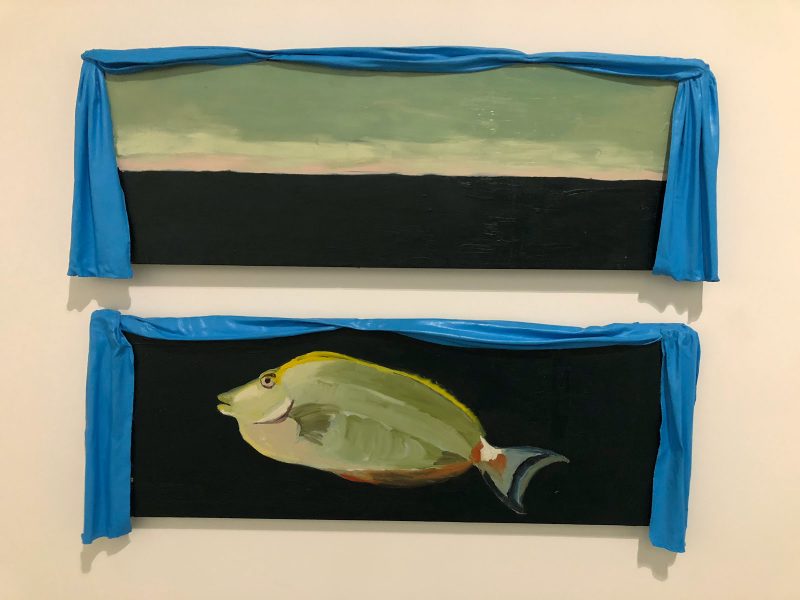
The final room of the gallery is dedicated to the installation Manipulations of the Organic, which features fourteen acrylic paintings created during the final year of Morton’s life. The fourteen paintings fuse, in a way, to create a single work. Each painting features a deep gray background, and a brightly colored subject. Some of these subjects resemble flowers while others are more abstract and harder to place. The panels are underlined by a passage that reads:
The dreamer-man becomes the seer. The mystic. The poet. The prophet.
The pioneer. The affirmer. The proud adventurer. He dreams his dreams
with open eyes. With clear vision of realities. With far foreseeing outlook.
With intense persistent concentration upon an idea. A purpose.
Though the protagonist of this quotation is identified as a male, I still interpreted it as an artist’s statement of sorts, and a testament to the sense of purpose that Morton derived from her work.
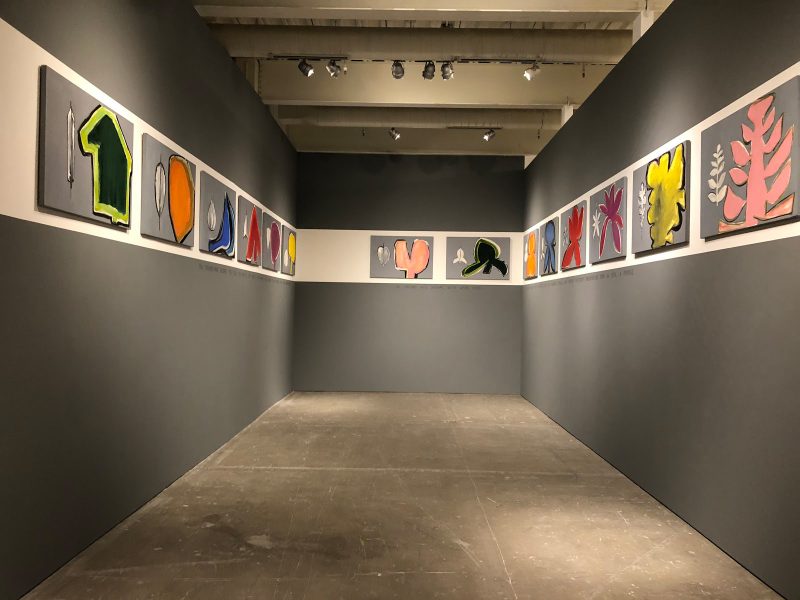
Ree Morton: The Plant That Heals May Also Poison is currently on view at the Institute of Contemporary Art, University of Pennsylvania through December 23, 2018.


